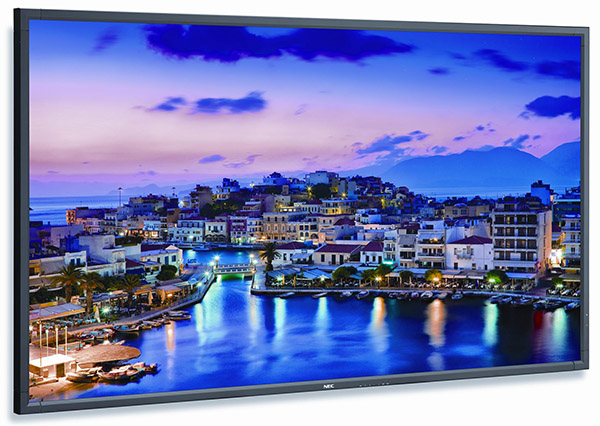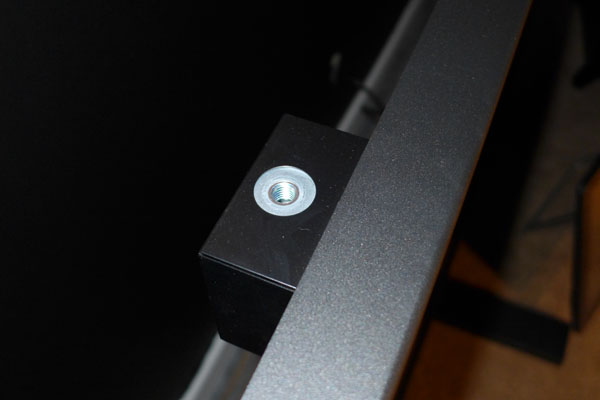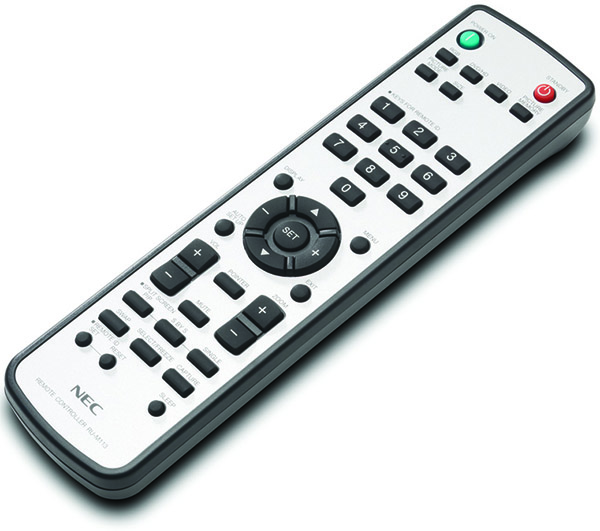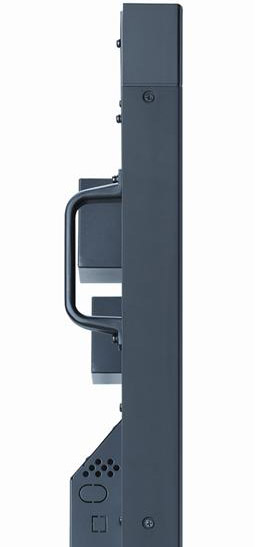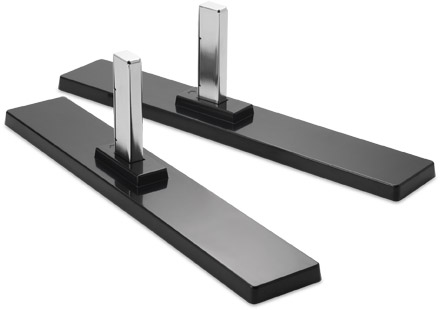NEC V801 Review: Benchmarking A Massive 80-Inch Monitor
Packaging, Physical Layout, And Accessories
Product 360
The V801 presents an all-business appearance with a neutral style that puts the image front and center with no distractions from the chassis. The bezel and the back plate are stamped steel. There isn’t much going on up front besides the screen. All of the interesting goodies are on the sides and back.
There is plenty of ventilation to keep the V801 nice and cool. Thermostat-controlled fans are built in and can be managed from the OSD. Around the NEC logo are lugs for a 400 mm VESA mount. NEC even has a wall bracket available for this beast. If you hang this display, make sure the studs are reinforced to support at least 150 pounds.
Speaking of hanging…
There are two of these lugs at the top of the V801. With the appropriate hardware, you can hang it from cables in a free-floating configuration. The idea of having a 135-pound monitor hanging overhead is both tantalizing and terrifying!
The V801 is a tremendously flexible monitor as evidenced by this very full input panel. From the left we have analog RGBHV BNC-type terminals, DisplayPort, HDMI, DVI in and out for daisy-chaining, VGA, and composite video inputs. At the far right is a LAN port and RS-232 I/O connections. As long as your source outputs a compatible signal, you can connect almost anything to the V801.
You're only able to use this control panel if the V801 is mounted to a frame, rather than a wall. And you can't see what you're doing as you manipulate its buttons, either. They control the power, select the input source, and navigate through the screen's menus. Fortunately, there's a TV-style remote included.
This wand works very well, except that it isn’t back-lit, making it difficult to use in a dark room. At the top are discrete power keys, plus one-button input access, picture mode toggle, aspect ratio, and audio. In the middle is menu navigation with volume and PIP controls. You can use a single remote to control up to 100 V801s by giving each monitor a unique ID.
Get Tom's Hardware's best news and in-depth reviews, straight to your inbox.
Four of these handles are bolted onto the V801 to help you move it. We found them indispensable in our lab.
Here are the external speaker connections. The slot cover above them can be removed to insert a single-board PC, which NEC sells as an optional accessory. This would be extremely handy in presentation situations where you’d want a self-contained solution.
A tiny box on the back of the display contains one of the two down-firing speakers. They boast 10 watts of power, but their output is underwhelming. Consider them fine for basic computer sounds and little else. Frequencies are limited to the upper mid-range.
NEC also sells a simply stand as one of the V801's optional accessories. It’s a two-piece affair that bolts onto threaded fittings in the back. It was very helpful for our purposes, but we believe a majority of owners will mount the screen in some fashion.
Included in the box is a power cord, a DVI cable, and a CD containing drivers and user manuals. NEC also throws in batteries for the remote control.
Current page: Packaging, Physical Layout, And Accessories
Prev Page NEC's 80" V801 Monitor: Size Does Matter! Next Page NEC V801 OSD Setup And Calibration
Christian Eberle is a Contributing Editor for Tom's Hardware US. He's a veteran reviewer of A/V equipment, specializing in monitors. Christian began his obsession with tech when he built his first PC in 1991, a 286 running DOS 3.0 at a blazing 12MHz. In 2006, he undertook training from the Imaging Science Foundation in video calibration and testing and thus started a passion for precise imaging that persists to this day. He is also a professional musician with a degree from the New England Conservatory as a classical bassoonist which he used to good effect as a performer with the West Point Army Band from 1987 to 2013. He enjoys watching movies and listening to high-end audio in his custom-built home theater and can be seen riding trails near his home on a race-ready ICE VTX recumbent trike. Christian enjoys the endless summer in Florida where he lives with his wife and Chihuahua and plays with orchestras around the state.
-
Someone Somewhere Yeah, 1920x1080... those pixels are 0.92mm square. That's pretty easy to see with the naked eye; far bigger than a full stop.Reply
27.5ppi... *shudders*.
EDIT:
the V801’s size is better expressed in feet: 227.6 (69.37 square meters for the rest of the world)
Ummm... 70 square meters is pretty big. That's about half of the average house. I think you'll find it's ~1.76 m² or 19 ft². -
virtualban For that size I clicked the article in hopes that maybe it was some 8K monitor. Stopped reading after 1080pReply -
baddad I've had a Mits 82" DLP since 2011 I paid $1900.00, that is the heart of my media center, so $9400 for just a monitor is a bit much.Reply
